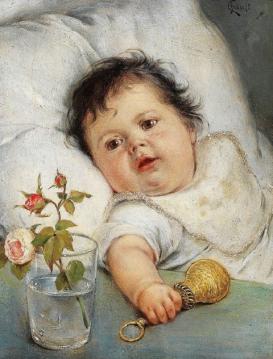At-home observation lay at the heart of fin-de-siècle citizen science efforts to map the mental development of infants. Following Charles Darwin’s example, young fathers, mothers, and other family members relied on pen and paper to document what they considered noteworthy, but they also employed many other means to make the inner workings of babies’ evolving minds visible: from flowers and rattles to woolen threads, mirrors, pots, and spoons, and much else turning at times their entire household into a laboratory habitat.
This project traces data and media practices of at-home observation of infants through objects of the household and everyday life. Reflecting recent concerns about the impact of hand-held media devices on the cognitive capacities of children, the project focuses in particular on the observers’ explorations of babies’ haptic engagement with the world surrounding them.
Starting out from rattles and other objects within infants’ grasps in nineteenth-century at-home observation, the project also seeks to launch a broader view on various hand-held media as a way to put perceptions of the relationship between hand and mind in a long-durée perspective. Pen, needle, pick and hammer, piano, and smartphone will serve as focal points to contextualize theories, practices, and technologies of deciphering and forging humans' bodies, mind, and reason within and across pedagogy, the human sciences, and media studies.

